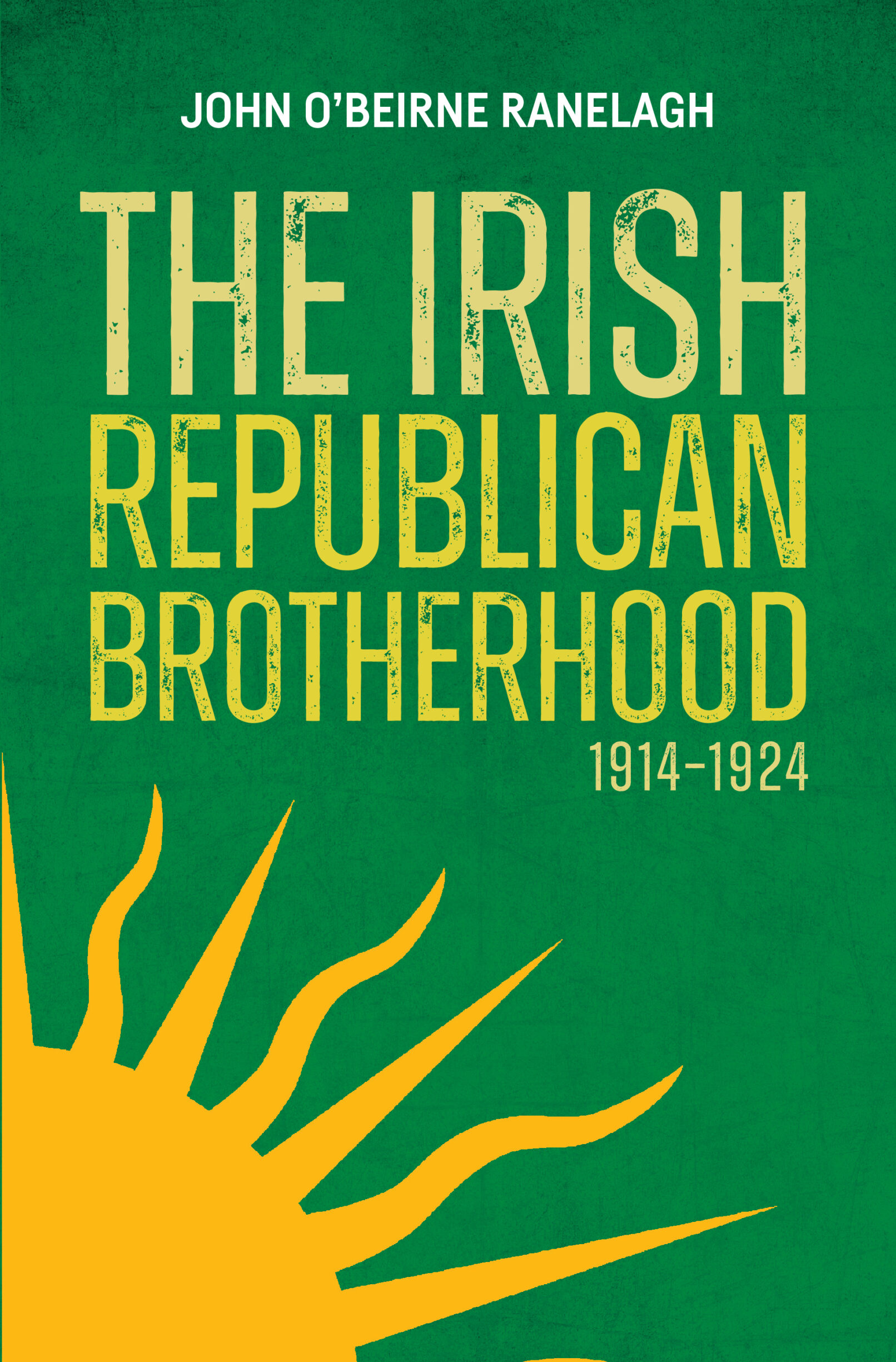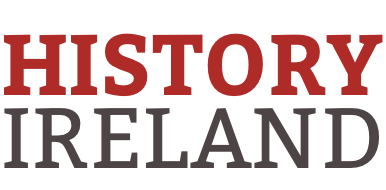JOHN O’BEIRNE RANELAGH
Irish Academic Press
€29.99
ISBN 9781785374944
Reviewed by
Owen McGee

Seven appendices and four chapters of this book are devoted to IRB constitutions. Tables of the IRB’s (minimal) resources could have told far more. Draft IRB constitutions from 1922–3, which the author discovered and made the basis of a 1976 journal article, are used to describe the post-Treaty demise of the IRB amidst a tripartite IRA split under Richard Mulcahy, Liam Lynch and, the author suggests, Joseph McKelvey (not Rory O’Connor). He may be correct that Diarmuid O’Hegarty tried to disband the IRB as soon as Michael Collins was killed to prevent it from becoming a vehicle for republican opposition to the Irish Free State (p. 296). He may well be correct in saying that the IRB was simply ‘defeated’, ‘the War of Independence was not won’, ‘nor was there a revolution in Ireland’ (pp 15, 280, 404), but the absence of a focus on resources means that explanations for these claims are missing. Instead, the author is content to rely on oral history statements, including some he collected in the 1970s. This creates a vibrant text with a focus on personalities, anecdotes and rumours, not context. Echoing the Bureau of Military History witness statements (the primary source for this book), the central questions of who, if anyone, was able and willing to create and finance an Irish army and on what conditions are never addressed.
The author used the witness statements well in his account of 1914–17. Thereafter his narrative is weaker. Eamon de Valera is summarily dismissed as ‘a sentimentalist’ (pp 16, 314) and Arthur Griffith as ‘a monarchist’ (pp 10, 88, 189). Their reasoning barely features in this book, although both worked very closely with the IRB leadership. Although he created an appendix listing IRB Supreme Council personnel, in the book’s main text the author repeats testimonies of Michael Collins’s centrality ad nauseum and mentions few other IRB leaders. Despite this, on several occasions (while citing no sources) he mistakenly dates Collins’s involvement in truce negotiations to the spring of 1920 (pp 242, 245–8, 312–14), not 1921, and then bases an analysis on that. Illogically, his chapter on the attempt to alter the command of the IRA in the winter of 1921 (entitled ‘Brugha’) precedes his chapter on the truce of the summer of 1921. Like much of this book, it is written on the oral history premise that de Valera and Cathal Brugha were obsessed with counteracting the IRB. The IRB had already declared its subordination to the Dáil and it was the Irish Volunteer/IRA executive alone that continued to assert a nominal independence from the Dáil ministry (pp 225–7); that was the issue that bothered de Valera and Brugha. The author quotes Richard Mulcahy’s explanation: ‘it is very simple to understand … members of the government … should not have a rope put around their necks or be otherwise penalised unnecessarily’ when certain actions were taken (p. 214). Like many historians, however, the author does not draw the obvious, logical conclusion: this was an intolerable stance under post-truce conditions. He is also content to repeat the claim that the IRB swayed a vote in favour of the Treaty even if he reproduces oral testimony to the contrary (p. 279).
Since the 1860s British counter-insurgency tactics regarding Ireland were focused on the IRB’s American paymasters. This important context is entirely absent from this study of 1914–24. IRB attempts to be financially self-sufficient dated from 1868, not 1917 (the author’s claim), but nevertheless its reliance on the American Clan na Gael to sustain its revolutionary organisation was a constant after 1878. For instance, an IRB–Clan na Gael split from 1884 until the end of the Boer War in 1902 paralysed the contemporary Supreme Council, and Tom Clarke’s declared motive for the 1916 Rising was to remedy the failure, or inability, of his generation of IRB leaders to have a rebellion during the Boer War. The author claims in passing that Clan na Gael supported the Treaty (p. 217). In fact, both wings declared that they would never support it, with John Devoy’s wing stating that it nevertheless saw the prospect of the withdrawal of British policing and territorial forces as a stepping-stone to a republic. Bizarrely, Harry Boland, an IRB president, is barely mentioned in this book, but his American mission (p. 233) and attempt to alter IRB–Clan na Gael relations between 1920 and 1922 had a central impact on the IRB, particularly in 1922 (it also had connotations for future IRA developments in 1926), while the author is evidently unaware that ‘the IRB’ he refers to as existing and disbanding in 1936 (p. 317) was the IRB Veterans Association, founded in New York in 1903 as a benevolent society for retired ex-members (it was never a part of the conspiracy). More importantly, he seems to be unfamiliar with the promise of an amnesty under the truce and Treaty agreements of 1921 and how this shaped Collins’s actions significantly up until his death (many were still in jail). The IRB acted at this time much as it did in the 1870s and after 1916: it focused on regrouping, not least through prisoner releases, as if that alone should be the priority and could provide a solution to any difficulty (including the IRA split). Was this a help or a hindrance to a broader political movement? As Leon Ó Broin might have said, it could be considered as neither: it was simply an additional political element. That, however, is not the author’s interpretation.
In his introduction and conclusion, the author claims that ‘a republic was the objective of the IRB and IRA’ but of ‘few others’: ‘everyone except a majority of the IRB and IRA wanted the Dominion settlement as elections were to show’, and Britain was only ever seeking to contain IRB ‘lawlessness’ (pp 311–16). He does not see the 1918 general election as a republican victory because republicans’ instincts were undemocratic (pp 4, 209–11), and he also suggests that the IRB operated in the exact same political context as later did the Provisional IRA (pp 6, 312). In his first two chapters, the author claims to have special insights on the basis of being the son of an IRB member and then, echoing Conor Cruise O’Brien’s reflections on nationalism, he typifies the IRB as always being inspired by ‘ancestral voices’ that motivated an irrational daring as conspirators, just like Wolfe Tone. Some readers may be satisfied by such a simplistic analysis alongside a reliance on reproducing very many witness statements. The latter feature of this book is certainly its principal merit, making it the most detailed treatment of its subject that is either currently or likely to be in print. Yet a very different story could have been told if its author had been aware of more than just oral history and instead treated the full context of both the Irish struggle for independence and the history of the IRB itself.
The author uses the witness statements cleverly to create an interesting chapter on the format of IRB meetings and another on Edwardian religious scruples. Nevertheless, his understanding of the movement’s history and character is peculiar. Notwithstanding Patrick McCartan’s admission that they were totally unsuited to be fighters and so became irrelevant after 1914, the author attributes a good deal of significance to the editors of Irish Freedom (1910–14). Despite this, he typifies the IRB as being committed to a strategy of ‘assassination’ to encourage ever-escalating reprisals (pp xxix, 311). In turn, he mistakenly argues that the Irish National Invincibles (which were not a part of the IRB, which denounced them) were the chosen model for Michael Collins’s actions and, in particular, his ‘squad’ (pp 24, 134). As such, the author is incredulous of the IRB’s intelligence war (including with regard to Lord French). The author repeatedly interprets the IRB on the basis of the text of surviving constitutions. As they are not mentioned by name in IRB constitutions, he assumes that ‘vigilance committees’ were a brief anomaly dating from an IRB rulebook from 1894 (p. 48), but vigilance committees—to assassinate informers or particularly dangerous intelligence agents only—were a formal part of the IRB, for its own protection, ever since 1866: Collins’s ‘squad’ was, in effect, just another ‘vigilance committee’.
Just as ‘squad’ methods led Pope Benedict XV to chastise Seán T. O’Kelly in May 1920, the perceived moral certainty that secret societies would sooner or later resort to such methods underpinned a perpetual and formal Catholic ban on the IRB, or ‘Fenians’, an event that can be formally dated to 1865 rather than 1870. Despite this, the author equates Catholic morality with IRB morality when, with due respect to the former, they could justly be typified as opposites. The author argues that the claim in the Supreme Council’s constitution to be an Irish Republic was an attempt by the IRB to embrace Catholic theology against secret societies (pp 43–4, 50–1). However, not only was the IRB (except, perhaps, for a brief period in the mid-1890s) most definitely a secret society but also the Proclamation of the Irish Republic and the Supreme Council were created in 1867 by a freemason (Thomas Kelly) who had recently created the first dreaded ‘vigilance committee’. The actual purpose of the republican government claim was always to motivate discipline, loyalty and enthusiasm amongst members, a purpose that it served after 1858 in essentially a very similar manner to what is quoted in this book for the post-1916 period (p. 148).
The author’s focus on IRB constitutions is a little askew in more ways than one. He assumes that Bulmer Hobson’s purposeful use of the 1873 constitution, which included a clause regarding awaiting the decision of the Irish public regarding the justice of a rebellion, meant that it remained in place until 1917. This ruling, however, dated from a time when the IRB was working temporarily with the Home Rule movement to boost an amnesty agitation; by 1878, once the last prisoners were released, this rule and strategy had served their purpose and were practically abandoned (reputedly there were other IRB constitutions in 1878, 1884 and 1891 without this ruling). Meanwhile, perhaps the most apt general conclusion that the author draws from the witness statements is that an urban–rural divide prevented coordinated action. This was true throughout the IRB’s history, not just after 1916, and it reflected an urban–rural divide within Irish society itself. Efforts at rebellion in 1848, 1867 and after 1916 involved arms raids and attempted take-overs of isolated rural police barracks, as if this was a way to establish an unassailable authority throughout most (and eventually all) of the land. This localism can explain why contemporaries abroad, as well as scholars of counter-insurgency (the author also wrote a study of the CIA), did not attribute strategic thinking to Irish rebels, but to typify such activity as therefore having been the work of assassins could be considered far wide of the mark. However, as academic scholarship tends to reinforce the same viewpoint, this book’s perspective may well attain greater currency than it perhaps deserves. In short, this book has various interpretative shortcomings. Nevertheless, it makes a good effort to achieve the impossible and use available evidence to tell a story that cannot be told with any certainty: the history of a secret society. Therein lies its appeal.
Owen McGee is the author of The IRB: the Irish Republican Brotherhood from the Land War to Sinn Féin (Four Courts Press, 2005).
